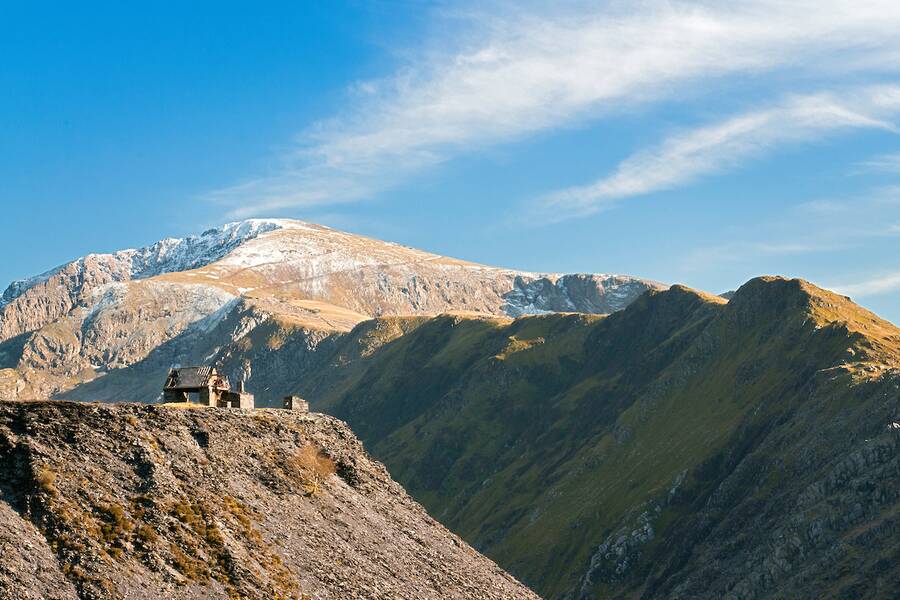It seems a long time ago (and a lot has happened since) but back in February 2020, we announced the UK government’s intention to bid for UNESCO World Heritage status for Snowdonia’s slate mining landscape. The stark and stoic slate mining landscape of Snowdonia was nominated for international recognition from the world’s leading heritage preservation organisation, UNESCO. If successful it would join other iconic Welsh landmarks, including the Pontcysyllte Aqueduct in Llangollen and the North Walian castles of King Edward I.
The road to UNESCO
Campaigners believed the mark left on Gwynedd and Snowdonia by an industry that literally roofed the world was worthy of this accolade. The landscape comprises so many tangible relics from our industrial past - including the shells of tiny quarrymens’ cottages on windswept hillsides, towering slate tips and skeletal workings. Slate has been quarried in North Wales for over 2,000 years but the industry reached its apex in the late 19th century when the expansion of towns and cities in the wake of the industrial revolution accelerated demand. At its peak, the Welsh slate industry produced approximately 485,000 tonnes of slate every year and employed over 17,000 people - Welsh men, women and children from towns and villages across Gwynedd.
On the 28th of July the dream became reality when UNESCO inscribed the Slate Mining Landscapes of Northwest Wales the 33rd UNESCO World Heritage site in the UK. The Slate Landscape of Northwest Wales - labelled an area of “remarkable uniqueness”’ by PM Boris Johnson - joins over 30 other UK UNESCO sites.
The successful bid was led by Gwynedd Council on behalf of a partnership which included the Royal Commission, Welsh Government, CADW, Snowdonia National Park Authority, Bangor University and the National Trust. The nomination document sought to emphasise the importance of the culture surrounding slate mining as well as its industrial legacy: “The Slate Landscape of Northwest Wales… represents an exceptional example of an industrial cultural landscape that was profoundly shaped by large-scale slate quarrying and underground mining and by the rocking and transport of slate for national and international markets.”
🔴 BREAKING!New inscription on the #WorldHeritage List: The Slate Landscape of Northwest Wales, #UK 🇬🇧. Congratulations!👏ℹ️ https://whc.unesco.org/en/list/1633/ #44WHC pic.twitter.com/y0f6culrEW
— UNESCO 🏛️ #Education #Sciences #Culture 🇺🇳😷 (@UNESCO) July 28, 2021
UNESCO’s brief was to seek out sites of “outstanding universal value” which possess “cultural, historical or physical significance.” Our local industrial landscape ticked all the boxes and it’s not hard to see why.
Our local slate heritage
Take a drive through Snowdonia and traces of our slate mining past is everywhere; even within a stone’s throw of our hotel the evidence is tangible. Llanberis was the site of Dinorwig Quarry, the second-largest slate quarry in Wales, now home to the National Slate Museum. Just a short stroll from the hotel, this living history museum provides a fascinating insight into the daily lives of the people who lived and worked in slate.
From the hotel, you can also follow in the footsteps of the miners on the Llwybr Llech Eyryri (the Snowdonia Slate Trail). This 83-mile walking and cycling route takes in several industrial landmarks associated with the slate mining industry and some stunning mountain scenery to boot. Split into 13 sections, the trail can be walked over several days or at your leisure. Section 3: Llanberis to Waunfawr, takes 2-3 hours, taking you along forest paths and lanes high above Llanberis with stunning views of Llyn padarn, the Vivian and Dinorwig quarries before descending into the village of Waunfawr.
Responses
Archaeologist, Dr David Gwyn, has worked on the bid for the last 12 years. Speaking of the inscription, he said: “We’ve known for decades that the slate landscapes of North Wales are special, but to have it recognised by an international committee was a humbling moment.
“These are outstanding and beautiful landscapes with meaning for the whole of humanity. It says a great deal about our powerful history and our present day communities.”
Mark Drakeford, First Minister for Wales said: “Today’s announcement recognises the significant contribution this part of North Wales has made to the cultural and industrial heritage, not only of Wales but of the wider world.
“This worldwide recognition today by UNESCO will help preserve the legacy and history in those communities for generations to come and help them with future regeneration.”
Find out more
The landscapes comprising this UNESCO World Heritage site are:
- Penrhyn Slate Quarry and Bethesda, and the Ogwen Valley to Port Penrhyn;
- Dinorwig Slate Quarry mountain landscape;
- Nantlle Valley Slate Quarry landscape;
- Gorseddau and Prince of Wales slate quarries, railways and mills;
- Ffestiniog: it’s slate mines and quarries, the ‘city of slates’ and railway to Porthmadog;
- Bryneglwys Slate quarry, Abergynolwyn village and Talyllyn Railway.
We will be exploring some of these iconic locations and landmarks in an upcoming blog series entitled Our Slate Landscape, so be sure to check back soon!

